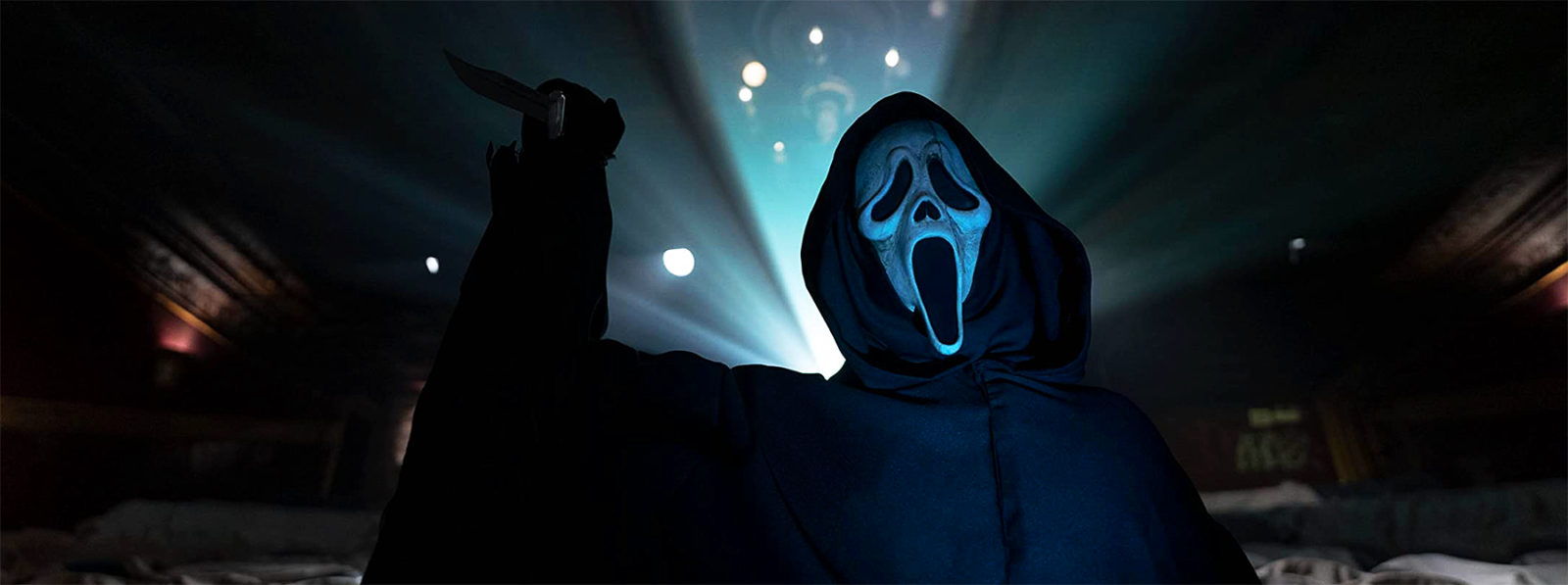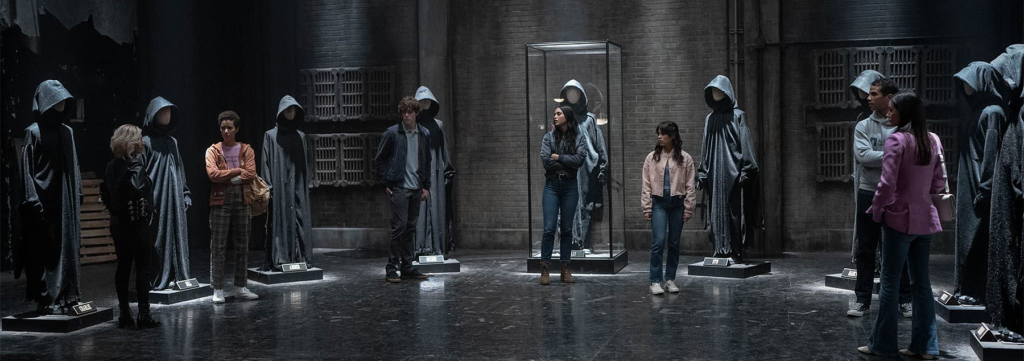Scream VI: Rules and Consequences

Horror’s gone through a lot of different phases—the classic monster movie, the atomic monster movie, the serial killer, the slasher. Each one has its own set of tropes and rules which, at some point, become a trope themselves. The trick is knowing how to play into those tropes while still keeping an audience on its toes.
The Scream franchise is probably the most recognizable property in self-reflexive horror. It’s been poking fun at the “horror movie rules” for decades; it’s a Scream rule for the characters to have a conversation about the rules once bodies start dropping. But after six films and almost thirty years, Scream is facing that age old problem: how do you make new content that stays true to the franchise without getting repetitive or cheap? And how long can you sustain it?
The Rules of Breaking the Rules
Let’s pretend we’re in a Scream movie and review the rules.
Think of horror rules like the poison scene in The Princess Bride. On the first level of analysis, you should take the other person’s cup to avoid being poisoned. On the second level, maybe they anticipated your choice and put the poison in their own cup. On the third level, maybe they anticipated that you would think that they anticipated your choice so they actually put the poison in your cup thinking—oh, you get the picture. The only way to win is to poison both cups.
So how does that translate to a horror movie? At one point, the killer would be the obvious suspect—the escaped convict, the loner, the monster. On the next level, the killer would be the least obvious suspect—the next door neighbor, the lover, the best friend. By the third level, filmmakers realized audiences would be looking at the least obvious suspects, which meant it would actually be more surprising if they stuck with the most obvious suspect. That could be considered smart, or it could come off as outdated. If you don’t want the plot twist to fall flat, you need to add something extra; you need to poison both cups.

Scream’s Franchise Rules
Scream VI is juggling two sets of rules: “horror movie rules” and “requel rules.” It’s a delicate dance, and one that’s laid out plainly in the characters’ obligatory rule discussion. As the group’s resident horror nerd—Mindy—explains, that brings them to the third level: “franchise rules.”
There are a lot of parallels between the first two Scream movies and the two latest Scream movies. Scream (1996) and Scream (2022) both take place at Woodsboro High School. The murders are committed by a team of two killers, inspired by their love of horror movies. One of them is dating the main heroine, who becomes a target because of her parents. Billy targets Sidney because her mother broke up his parents’ marriage, while Richie goes after Samantha because she’s Billy’s daughter.
In the same way, Scream VI (2023) is reminiscent of Scream 2 (1997). The heroine leaves her small town for college, taking one or more of her fellow survivors with her. Even though she’s struggling to shirk fame and live a normal life, the murders follow her to campus as someone tries to punish her for the events of the previous movie. Mindy points all of this our early in the film, reminding her friends that everyone is a suspect and everyone is dispensable. At this point, it’s not enough to expect the unexpected. You should expect the opposite of the expected.
But if the film’s telling you to expect the opposite, then…should you expect the opposite of the opposite?

The Consequences
The good thing about Scream VI is that it’s hyper-aware of this problem. It pokes fun at itself, serves up red herrings, and carefully picks through plot twists to make an interesting story. At the very least, it’s not blindly staggering forward with unwarranted confidence.
The bad thing about Scream VI is that it’s so focused on solving this problem that the rest of the movie…sort of falls flat. The new characters are likable, but expendable. The old characters are a comfort to have back, but never trustworthy. There’s enough slicing and stabbing to keep the action interesting, but that also means a lot of characters miraculously surviving life-ending injuries. In small doses, that’s not usually a problem, but there comes a point when any injury—no matter how serious—loses its weight. What does it matter who gets stabbed in the chest or the stomach or the back or throat if they can just get up a few minutes later?
Also, if you haven’t had the pleasure of being a woman on the NYC Subway, it’s just…like that. All the time.
At the heart of it, the problem of expectations becomes its own problem. The filmmakers and the characters are both so focused on the “trust no one” policy that it becomes difficult for the audience to connect with any of the characters. The relationship between the “core four”—Samantha, Tara, Mindy, and Chad—is the only one that feels genuine. Every other comedic or heartfelt moment in the film feels like it was included out of obligation rather than intent.
What’s left is a movie that’s entertaining, but feels like its going through the motions. Which—let’s be honest—is usually the cause of death for franchises. Hopefully the next installment can pull the franchise back from the edge.
Scream VI is in theaters now.
–
